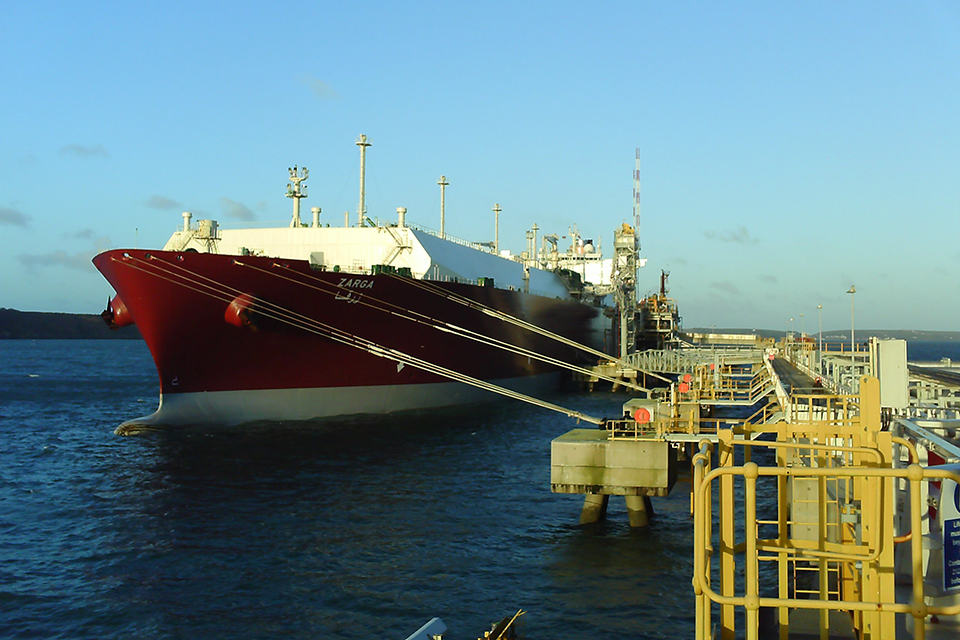Failure of mooring line on board LNG carrier Zarga with 1 person injured
South Hook LNG terminal, Milford Haven, Wales.
Accident Investigation Report 13/2017
Investigation report into marine accident including what happened and safety lessons learned:

Summary
A deck officer suffered severe head injuries when he was struck by a parted HMPE mooring rope during a berthing operation at South Hook LNG terminal, Milford Haven on 2 March 2015.
The area where the officer was standing was clearly within the snap back zone of the rope but had previously been designated as a safe area.
The perception on board was that HMPE ropes did not recoil on failure, and the elasticity introduced by the rope’s tail had not been properly assessed.
The vessel’s mooring lines were not fit for purpose, they did not have the minimum breaking strength specified at build. they were not compatible with the vessels mooring deck fittings and the required working load limit was too high.
The predominant failure mode, axial compression fatigue, had not previously been associated with HMPE rope failures.
The rope’s tightly bound jacketed construction increased the likelihood of axial compression fatigue and prevented the crew from inspecting its load bearing core and identifying key discard criteria.
Guidance provided by the rope manufacturers and shipping industry bodies for the selection and use of high modulus synthetic fibre mooring lines was limited and often contradictory.
Safety lessons
- thorough snap back zone assessments had not been carried out for Zarga’s mooring lines
- weakness were identified in the command and control prior to and during the mooring operation
- had tugs been recalled to assist in the re-positioning of the vessel the accident might have been avoided
- the officer in charge of the forward mooring party got directly involved in a specific task and lost his overall view of the mooring operation
- the residual strength of the parted mooring line was below its accepted working load limit
- the manufacturer’s recommended safety factors for the rope were not taken in to account by the ship builder or vessel operator
- the diameter of the vessel’s deck fittings were too small for the HMPE ropes
- mooring line condition monitoring routines on board were ineffective
- the rope’s jacketed design made it difficult to identify key discard criteria
- axial compression fatigue had not previously been considered as a likely failure mode or significant cause of strength loss in HMPE rope
- strength testing methodologies, designed for the offshore sector, were inappropriately applied to ships’ mooring ropes
- the test methodology used by Bridon to achieve the required specified MBL for Zarga’s mooring lines was flawed. The realisation factor applied was unrealistic and the results were higher than previously or subsequently achieved
- insufficient information was exchanged between the vessel builders and the rope suppliers to ensure the ropes were fit for the purpose
Recommendations
Recommendations have been made to Shell International Trading and Shipping Company Ltd (2017/119 to 122), The Oil Companies International Marine Forum (2017/123 to 125), Bridon International Ltd (the rope manufacturer) (2017/117 to 118) and Eurocord (2017/126) aimed at improving the levels of knowledge among ship owners, managers, builders and crew regarding the complex properties of high modulus synthetic fibre ropes, and the advantages and limitations they present when used on board ships for mooring line applications.
Related publications
Safety Bulletin 1/2015 – relating to the issue of snap back and HMPE rope
Safety Bulletin 1/2016 – relating to the issue of axial compression fatigue